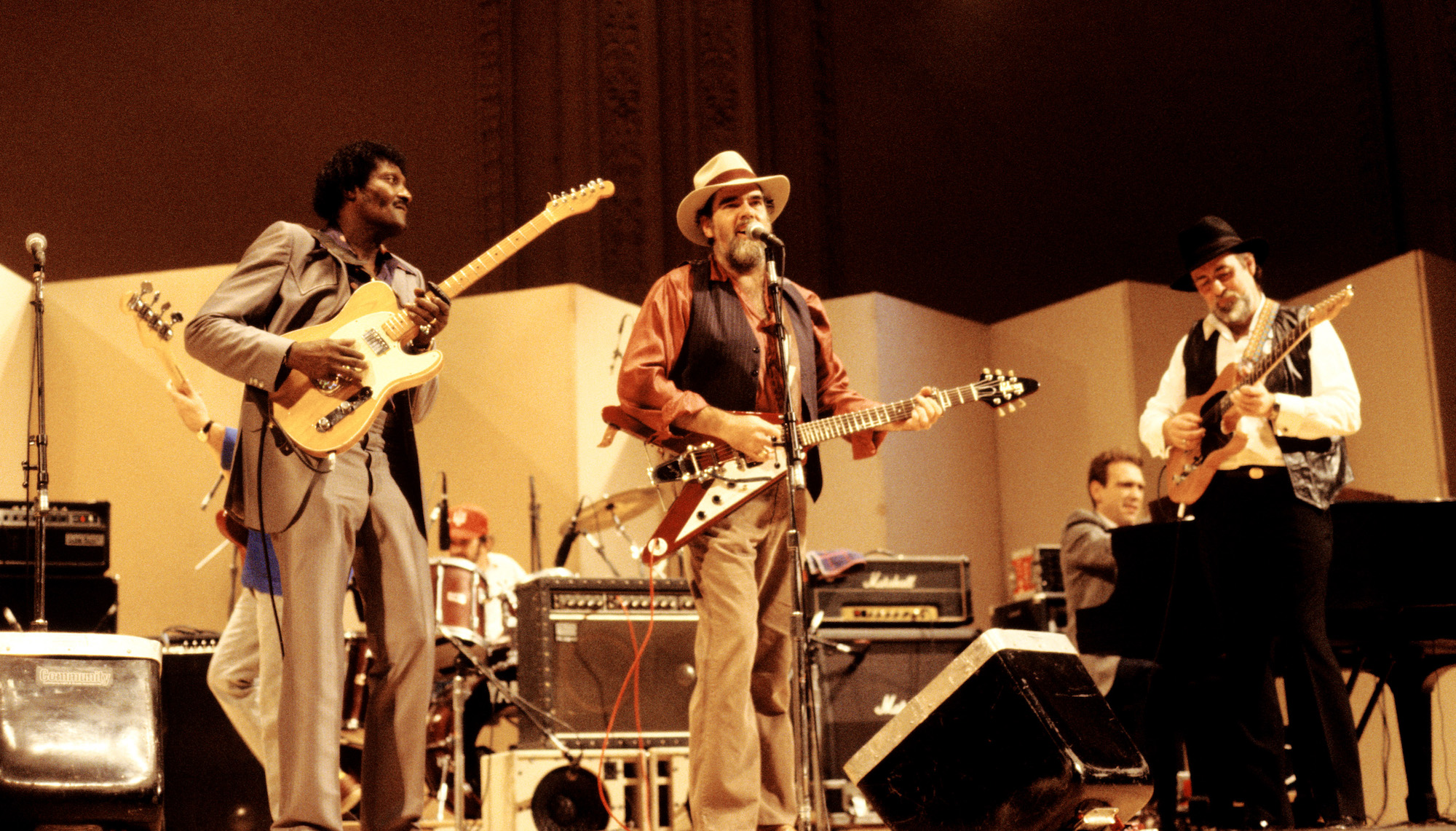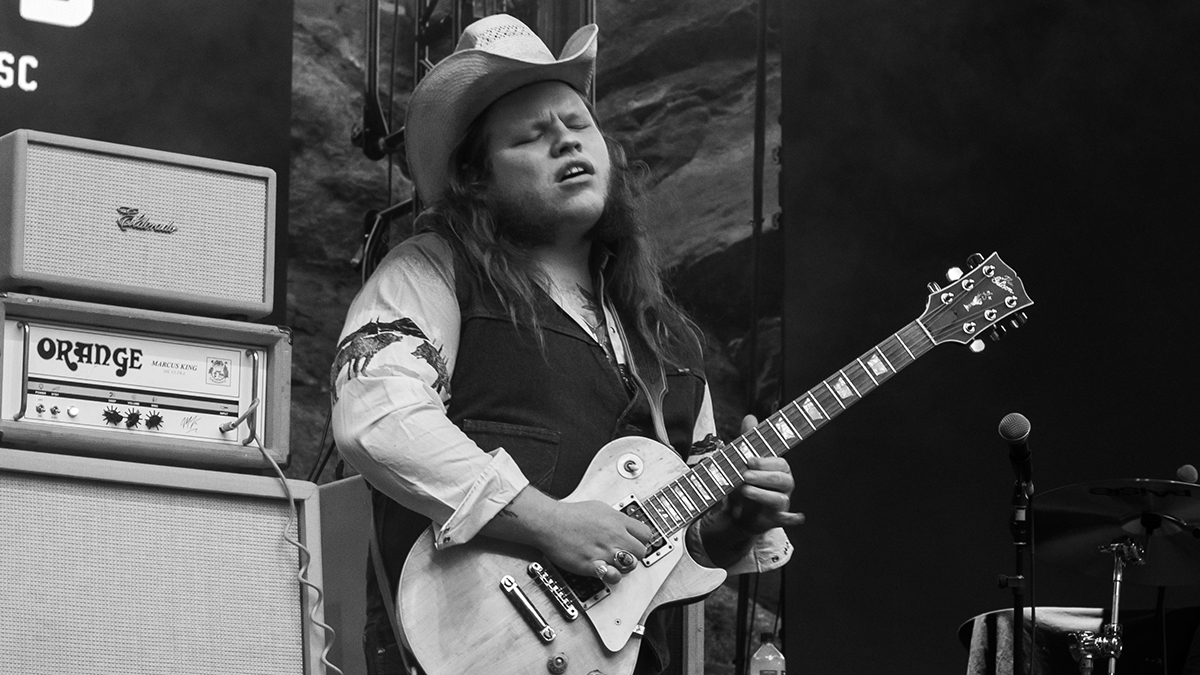Watch Lonnie Mack, one of the original Flying V masters, trade licks with Tele titans Albert Collins and Roy Buchanan
The three six-string aces came together for the aptly named American Guitar Heroes concert at Carnegie Hall in 1985

To call Lonnie Mack one of the first masters of the iconic Gibson Flying V electric guitar is in no way hyperbole.
Mack's most beloved V was a '58 model known as "Number 7," so named because it was the seventh V to ever roll out of Gibson's factory, then in Kalamazoo, Michigan.
Fitted, famously, with a Bigsby vibrato unit attached to a piece of stainless steel spanning the guitar's wings, the guitar was used by Mack throughout his lengthy, influential career.
Mack's close association with the V is part of what makes this 1985 clip of him jamming on the blues classic Further On Down the Road with Albert Collins and Roy Buchanan – two of the greatest Telecaster wranglers to ever walk the earth – so interesting.
Of course, it's also just an amazing gathering of three hugely influential players whose commercial success, sadly, never quite matched that impact. You can see the performance below.
The six-string summit occurred on December 6, 1985 as part of a package concert – held at New York City's Carnegie Hall – aptly named American Guitar Heroes: Genuine House-Rockin' Music.
From the start of the performance, Collins wastes no time making his mark, responding to each line Mack sings with the sort of stinging, high-wire licks that made him a legend.
Get The Pick Newsletter
All the latest guitar news, interviews, lessons, reviews, deals and more, direct to your inbox!
Collins also takes the first solo, worth hearing just for the incredible vibrato display on its very first note. Known for frequently using a guitar capo, Collins, notably, has his fitted all the way up at the 12th fret (!) in this performance.
Buchanan takes the second solo, staying within the blues framework certainly, but also hitting the gas pedal with some ludicrously fast hybrid picking.
Up third, Mack, in a manner that surely would've made Neil Young proud, begins his lead break by emphatically hitting a single note around a dozen consecutive times – and you bet it sounds killer. He also – during his solo's climactic point – just about tears the Bigsby clean off of his guitar.
If those fretboard fireworks aren't enough for you, though, have no fear – there's another round of solos around the video's 5-minute mark, highlighted by a truly gonzo fingerpicked opening salvo from Buchanan.

In the clip, Mack – of course – is using his trusty Number 7 V, an instrument that sets him apart on the star-studded stage, and certainly made him stand out back in the late '50s and early '60s.
Though it would, decades later, become one of the most recognizable and iconic guitar models ever, the Gibson Flying V was a dud at the time Mack purchased it – a bold, futuristic swing for the fences that was originally discontinued in 1959, barely a year after production had commenced, and before even 100 examples of the model had left the Gibson factory.
“What I wanted was the weirdest guitar I could find,” Mack once said of his rationale for purchasing the V at the time. “I wanted something that would look hip onstage.”
It might have been a weird choice at the time, but Mack's use of the V – along with Albert King and, a few years later, the Kinks' Dave Davies – did not go unnoticed. In the wake of Mack, King and Davies, Gibson saw a spike in interest in the Flying V that led the company to reissue the model – with a Vibrola, in a limited edition run of 175 models – in the late 1960s.
One of these late '60s-era Vs would, in turn, end up in the hands of one James Marshall Hendrix. And the rest, as they say, is history...
Jackson is an Associate Editor at GuitarWorld.com. He’s been writing and editing stories about new gear, technique and guitar-driven music both old and new since 2014, and has also written extensively on the same topics for Guitar Player. Elsewhere, his album reviews and essays have appeared in Louder and Unrecorded. Though open to music of all kinds, his greatest love has always been indie, and everything that falls under its massive umbrella. To that end, you can find him on Twitter crowing about whatever great new guitar band you need to drop everything to hear right now.

